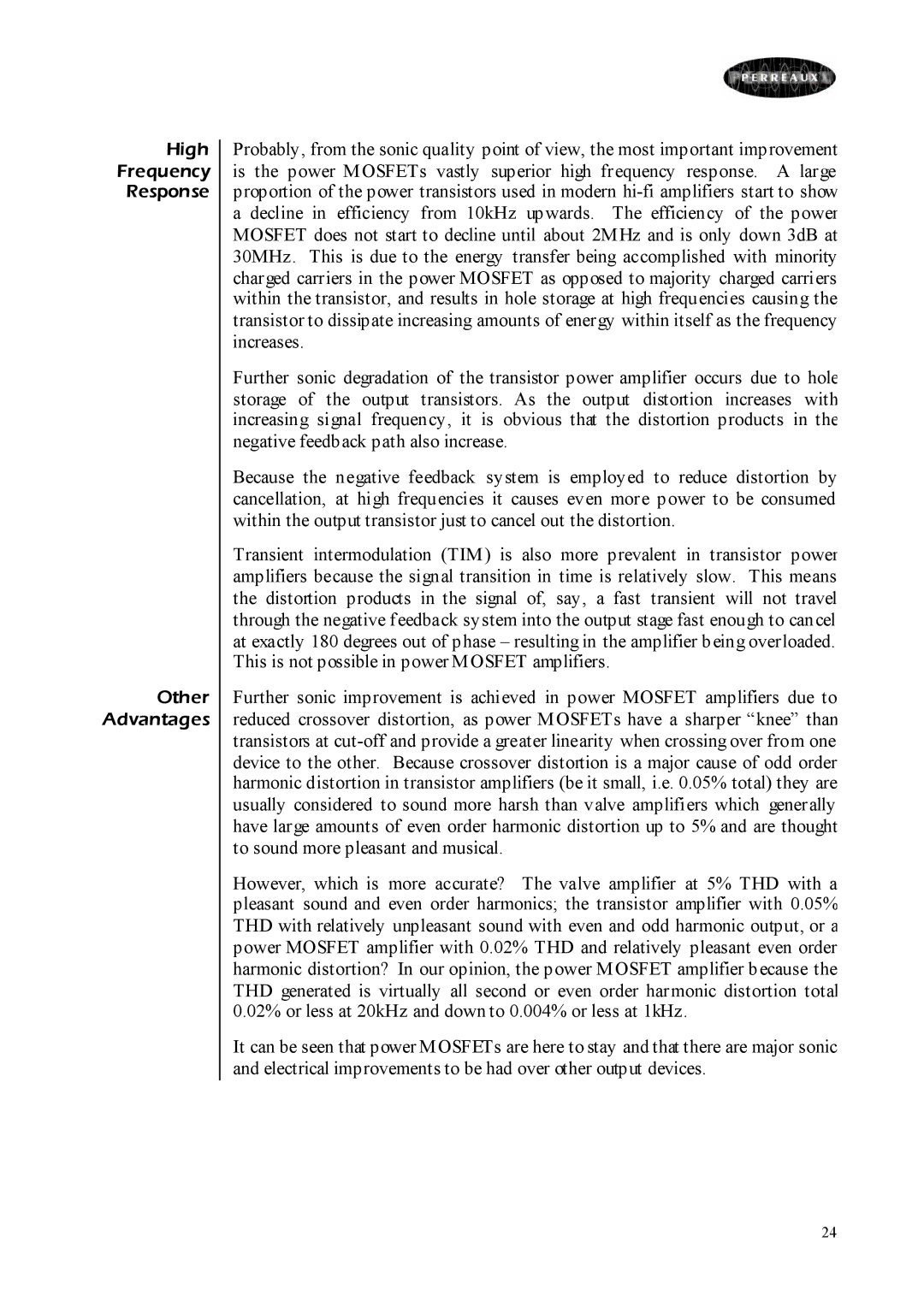
High
Frequency
Response
Other Advantages
Probably, from the sonic quality point of view, the most important improvement is the power MOSFETs vastly superior high frequency response. A large proportion of the power transistors used in modern
Further sonic degradation of the transistor power amplifier occurs due to hole storage of the output transistors. As the output distortion increases with increasing signal frequency, it is obvious that the distortion products in the negative feedback path also increase.
Because the negative feedback system is employed to reduce distortion by cancellation, at high frequencies it causes even more power to be consumed within the output transistor just to cancel out the distortion.
Transient intermodulation (TIM) is also more prevalent in transistor power amplifiers because the signal transition in time is relatively slow. This means the distortion products in the signal of, say, a fast transient will not travel through the negative feedback system into the output stage fast enough to cancel at exactly 180 degrees out of phase – resulting in the amplifier being overloaded. This is not possible in power MOSFET amplifiers.
Further sonic improvement is achieved in power MOSFET amplifiers due to reduced crossover distortion, as power MOSFETs have a sharper “knee” than transistors at
However, which is more accurate? The valve amplifier at 5% THD with a pleasant sound and even order harmonics; the transistor amplifier with 0.05% THD with relatively unpleasant sound with even and odd harmonic output, or a power MOSFET amplifier with 0.02% THD and relatively pleasant even order harmonic distortion? In our opinion, the power MOSFET amplifier because the THD generated is virtually all second or even order harmonic distortion total 0.02% or less at 20kHz and down to 0.004% or less at 1kHz.
It can be seen that power MOSFETs are here to stay and that there are major sonic and electrical improvements to be had over other output devices.
24
